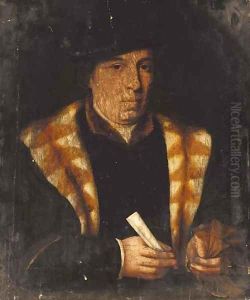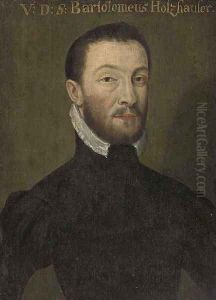Bartel Bruyn Paintings
Bartel Bruyn, also known as Bartholomäus Bruyn the Elder, was a prominent German painter associated with the Northern Renaissance, born in Wesel in 1493. He is most renowned for his portraits and religious compositions, displaying a keen eye for detail and a profound understanding of human expression and character. Bruyn made significant contributions to the development of portrait painting in Germany, and his works offer invaluable insights into the society and culture of his time.
Bruyn's career was primarily based in Cologne, where he became a leading portraitist, catering to the burgeoning demand from the city's affluent merchant class and ecclesiastical dignitaries. His portraits are characterized by their meticulous attention to detail, vibrant colors, and the sophisticated portrayal of fabrics and textures, which became hallmarks of his style. Bruyn's ability to capture the personality and stature of his sitters made him highly sought after. Beyond portraiture, he also executed altar pieces and other religious works, which were notable for their devotional intensity and refined execution.
In addition to his painting, Bruyn contributed to the arts as a teacher, influencing a generation of artists in the Cologne area. His legacy includes not only his own prolific output but also the foundation he laid for future artists in the region. Despite his significant contributions to Renaissance art, Bruyn's work was somewhat overshadowed by that of his contemporaries in other parts of Europe, leading to a period of relative obscurity. However, renewed interest in Northern Renaissance art has led to a greater appreciation of his contributions to the development of German painting.
Bartel Bruyn died in Cologne in 1555. Today, his works are preserved in several major museums and collections worldwide, where they continue to be studied and admired for their beauty, craftsmanship, and historical value. Through his portraits, Bruyn has left behind a vivid chronicle of 16th-century German society, and his religious works continue to be celebrated for their spiritual depth and artistic merit.

